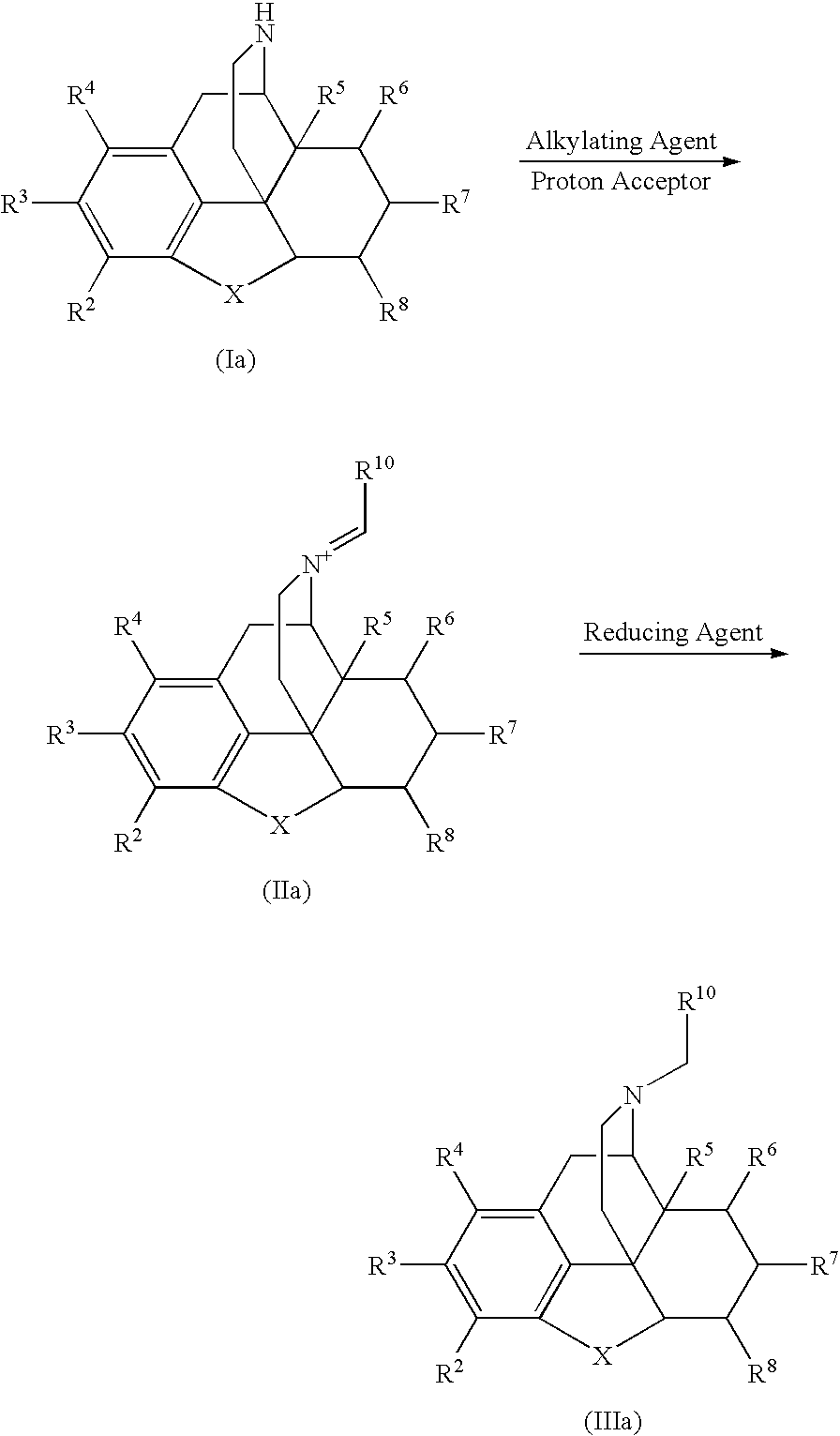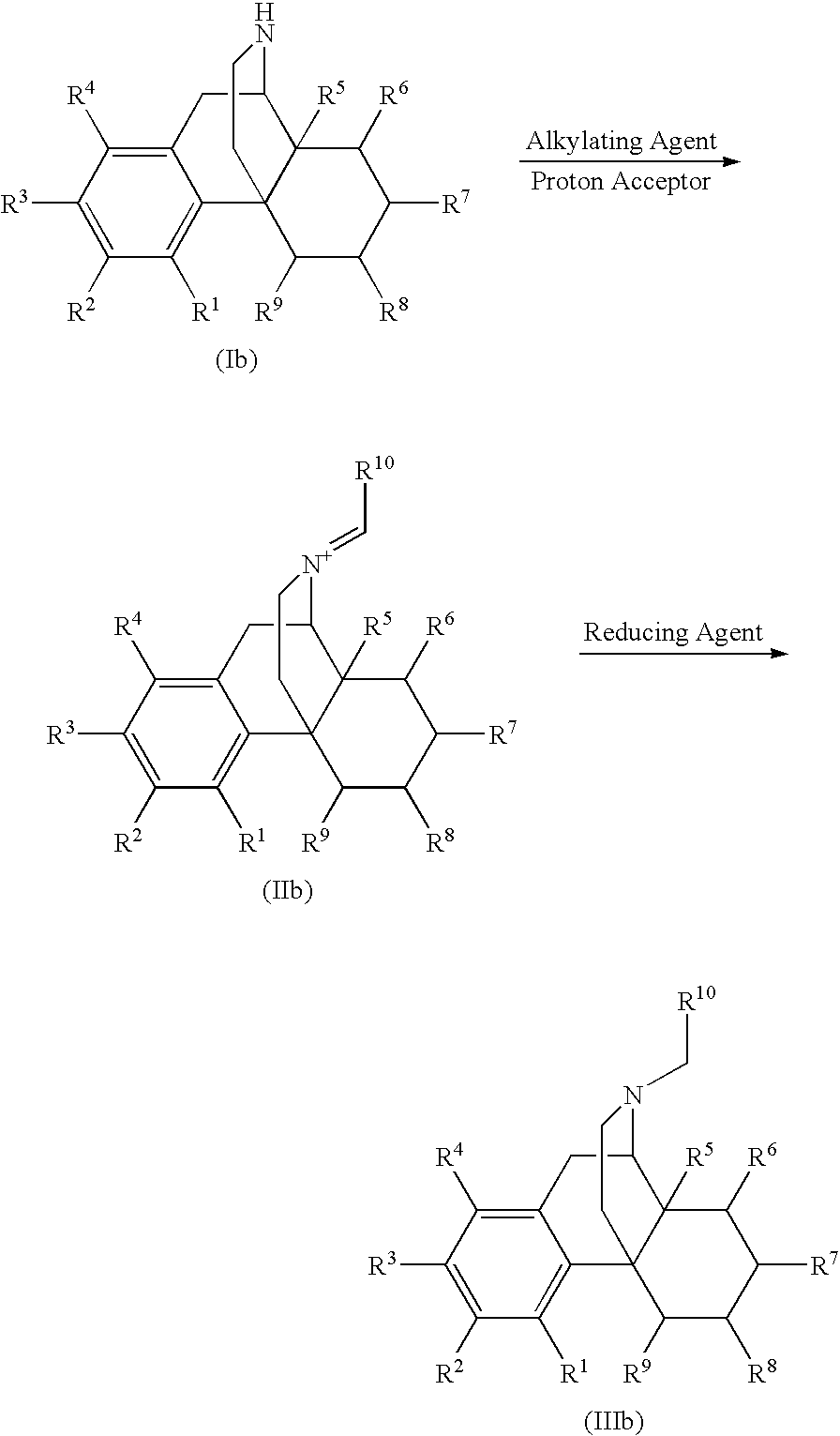Process for the Reductive Alkylation of Normorphinans
a technology of nalkylated morphinans and process, which is applied in the field can solve the problems of toxic, high cost of transition metal catalysts, and the method of synthesis of nalkylated morphinans known in the ar
- Summary
- Abstract
- Description
- Claims
- Application Information
AI Technical Summary
Benefits of technology
Problems solved by technology
Method used
Image
Examples
example 1
Production of Naltrexone
[0090]A quantity of 0.50 grams noroxymorphone was placed within a test tube. A stir bar was added to the test tube, which was subsequently sealed with a rubber septum. Subsequently, 1.0 mL methanol was added to the test tube to create a reaction mixture. Next, 1.0 mL of methanol was mixed with 2.0 mL of triethylamine in a separate test tube, and the mixture was chilled in an ice bath. After the mixture was allowed to chill, 0.83 mL formic acid was added to the methanol and triethylamine mixture. During addition of formic acid, care was taken to ensure that the temperature of the mixture was less than 30° C. After addition of formic acid, 0.19 mL cyclopropanecarboxaldehyde (CPCA) was added to the mixture, with care to ensure that the temperature was maintained below 25° C.
[0091]Once the separate reaction mixture comprising methanol, triethylamine, formic acid, and CPCA mixture was formed, the mixture was added to the test tube containing the noroxymorphone and...
example 2
Production of 6-Ketonalbuphine
[0095]A quantity of 0.50 grams noroxymorphone was placed within a test tube. A stir bar was added to the test tube, which was subsequently sealed with a rubber septum. Subsequently, 1.0 mL methanol was added to the test tube to create a reaction mixture. Next, 1.0 mL of methanol was mixed with 2.0 mL of triethylamine in a separate test tube, and the mixture was chilled in an ice bath. After the mixture was allowed to chill, 0.83 mL formic acid was added to the methanol and triethylamine mixture. During addition of formic acid, care was taken to ensure that the temperature of the mixture was less than 30° C. After addition of formic acid, 0.19 mL cyclobutanecarboxaldehyde (CBCA) was added to the mixture, with care to ensure that the temperature was maintained below 25° C.
[0096]Once the separate reaction mixture comprising methanol, triethylamine, formic acid, and CBCA mixture was formed, the mixture was added to the test tube containing the noroxymorphon...
PUM
 Login to View More
Login to View More Abstract
Description
Claims
Application Information
 Login to View More
Login to View More - R&D
- Intellectual Property
- Life Sciences
- Materials
- Tech Scout
- Unparalleled Data Quality
- Higher Quality Content
- 60% Fewer Hallucinations
Browse by: Latest US Patents, China's latest patents, Technical Efficacy Thesaurus, Application Domain, Technology Topic, Popular Technical Reports.
© 2025 PatSnap. All rights reserved.Legal|Privacy policy|Modern Slavery Act Transparency Statement|Sitemap|About US| Contact US: help@patsnap.com



